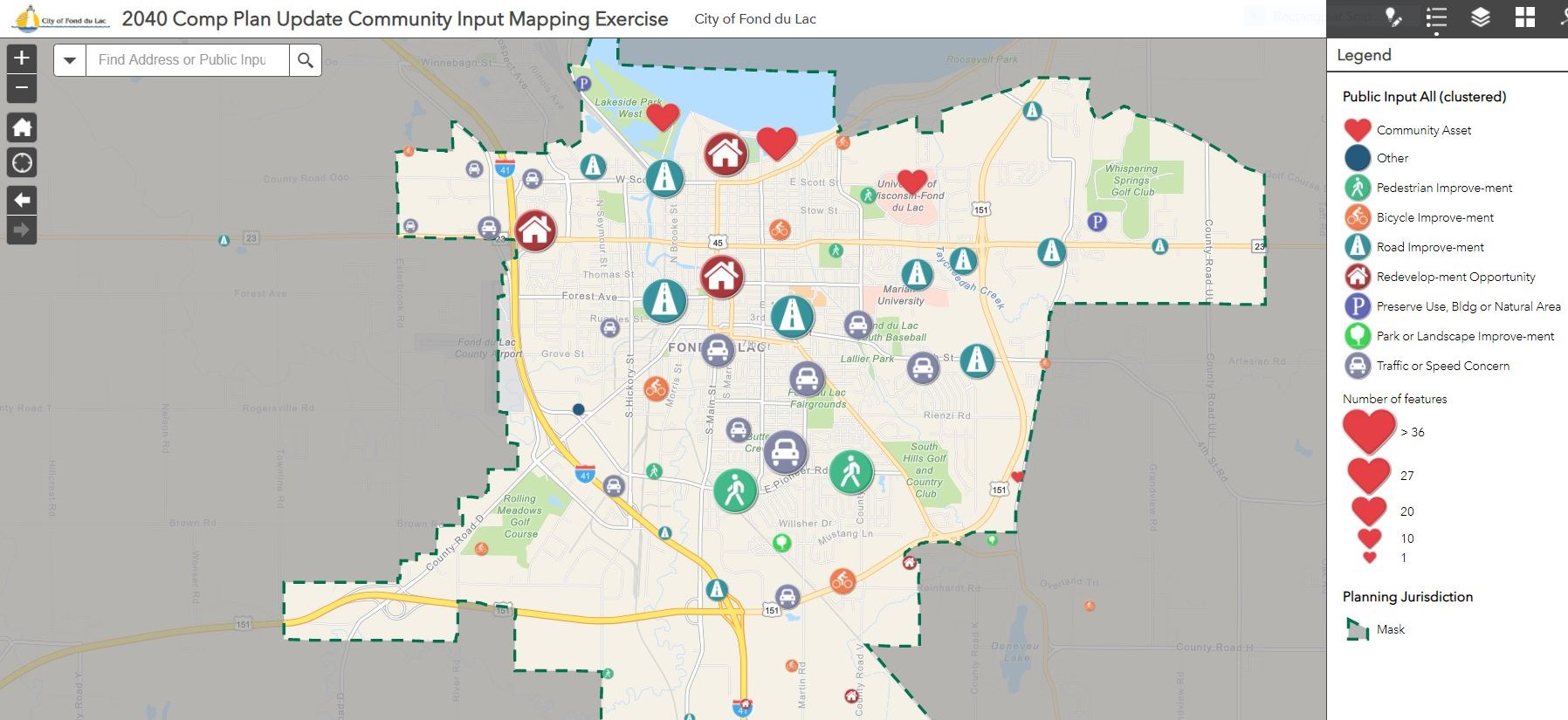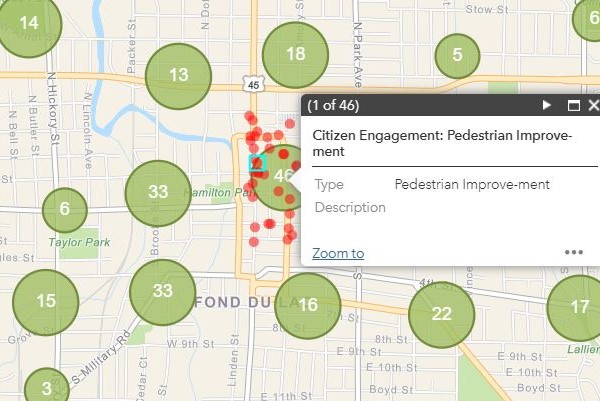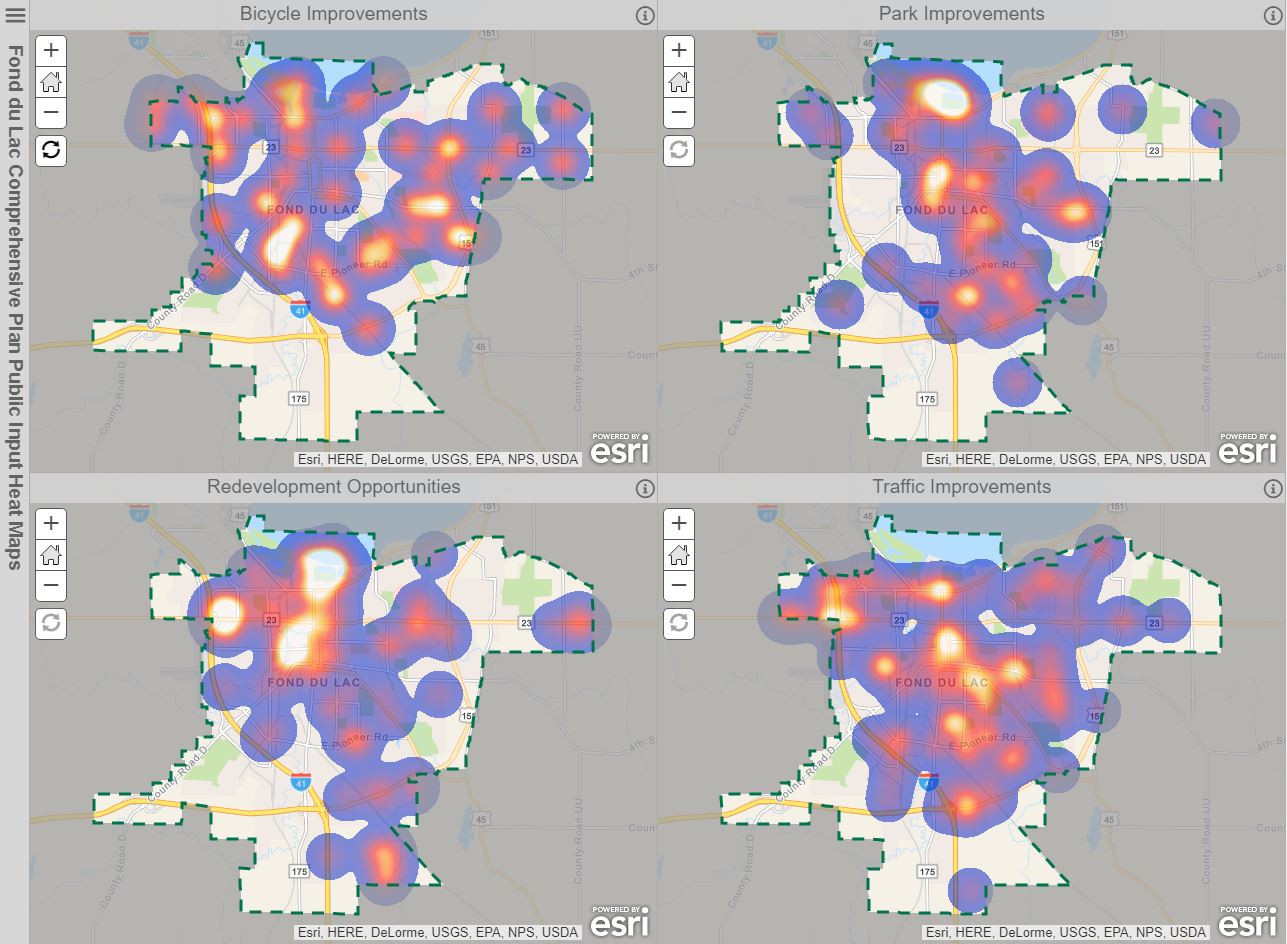Planning, developing and engineering a community’s public works infrastructure works best when citizens are engaged in the process. Crowdsource reporting apps that utilize GIS are effective at gathering public input.
These apps help communities plan for future development and maintain existing infrastructure by collecting and incorporating input from their citizen base. Location-specific with immediate, real-time capabilities, these GIS-driven applications are an easy, intuitive means to involve the public in municipal affairs.
Planning and development
Communities are in a perpetual state of planning. The successful implementation or updating of comprehensive plans, capital improvement plans, downtown improvement plans or park master plans requires public involvement. Citizens want to be involved in visioning for the future of their community. And, their input is critical in building consensus and gathering support to move a project forward, especially if a bond or other means of public funding is needed. When the community is part of the idea before the decision is made, support comes much easier.
Crowdsource reporting apps are an excellent tool for soliciting public comments about community planning efforts. What do residents want specific neighborhoods, parks or business districts to look like? What amenities are missing? Where are opportunities for improvement?

Custom crowdsource application for the City of Fond du Lac, WI
Let’s say that a community is working on updating their comprehensive plan. A crowdsource reporting app is configured for that community with an online interactive map and a variety of means for citizens to add comments, identify needs or offer ideas for development within that map. Any individual can simply click on the location of their choice — whether that’s a street, neighborhood, intersection, district, park, etc., — and add their pertaining comment or upload a photo to accompany their thoughts.

This is useful for collecting feedback about pedestrian routes, bicycle or multi-use trails, development or redevelopment opportunities, park and green space improvements, lighting or safety needs and property condition concerns—or to identify community assets, favorite places or assets community members feel need preservation.
Public works and city services
Crowdsourcing apps can also be immensely useful in identifying public works or transportation needs—as well as planning and budgeting for infrastructure maintenance, upgrades or replacement.
Similar to engagement for planning purposes, the public can readily bring local issues or opportunities to the attention of community leaders. For example, identifying on a map where utility services might need maintenance or repair or if a particular intersection is causing recurring safety concerns. Other uses might include reporting where neighborhood potholes need attention, if a tree has fallen or is in need of pruning near a power line, where a sidewalk is in disrepair, a roadway damaged, or an intersection is not ADA compliant. These things are logged with the app by individuals within the community, identified on an online map, and feedback is immediately gathered by city officials, who then can issue a work order to provide maintenance and repair, or to track completion of the task.
Crowdsource app synthesis
For community leaders, synthesizing data acquired through these apps is as intuitive as it is for those providing it. Planning directors or public works leaders can quickly gather a summary of input information and, at a glance, can view the number of engagements per category, read public comments, and review a graphic portrayal of the community map with pins and icons that represent areas where the public has expressed their opinion. From here, a GIS team can build output models such as heat maps that aggregate all input data based on category.

Rather than needing to review an exported spreadsheet, these apps easily translate into simple, useful summaries of information gathered. This can be immensely helpful in prioritizing projects based on public input. As specific issues and priorities rise to the top of the list, citizens recognize their feedback is influencing the planning process and appreciate knowing that elected officials have their ear.
For municipal leaders with plenty of other things already on their to-do list, the implementation of crowdsourcing apps is a cost-effective and efficient means to plan for and preserve all the amenities their residents hold dear.

